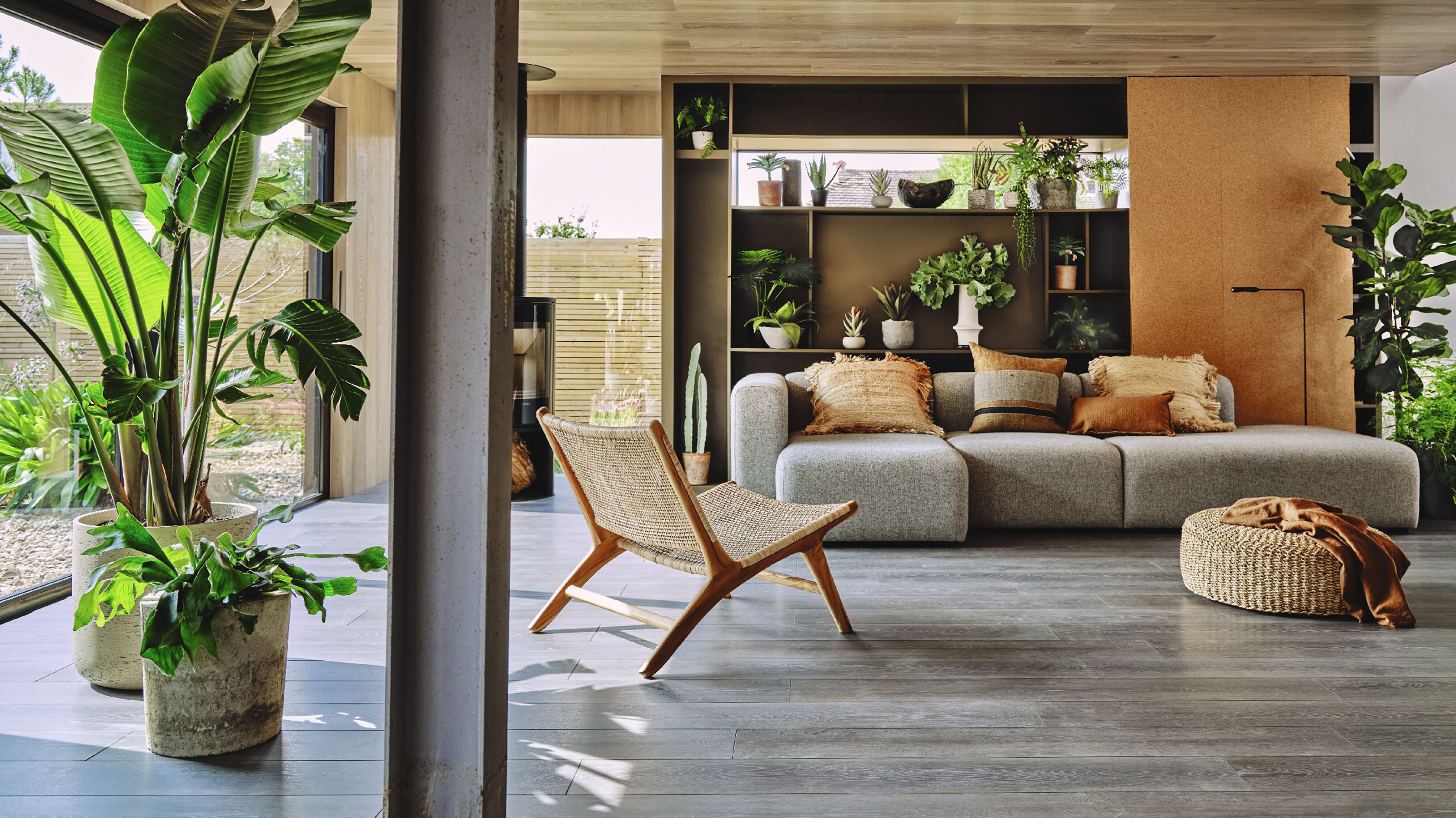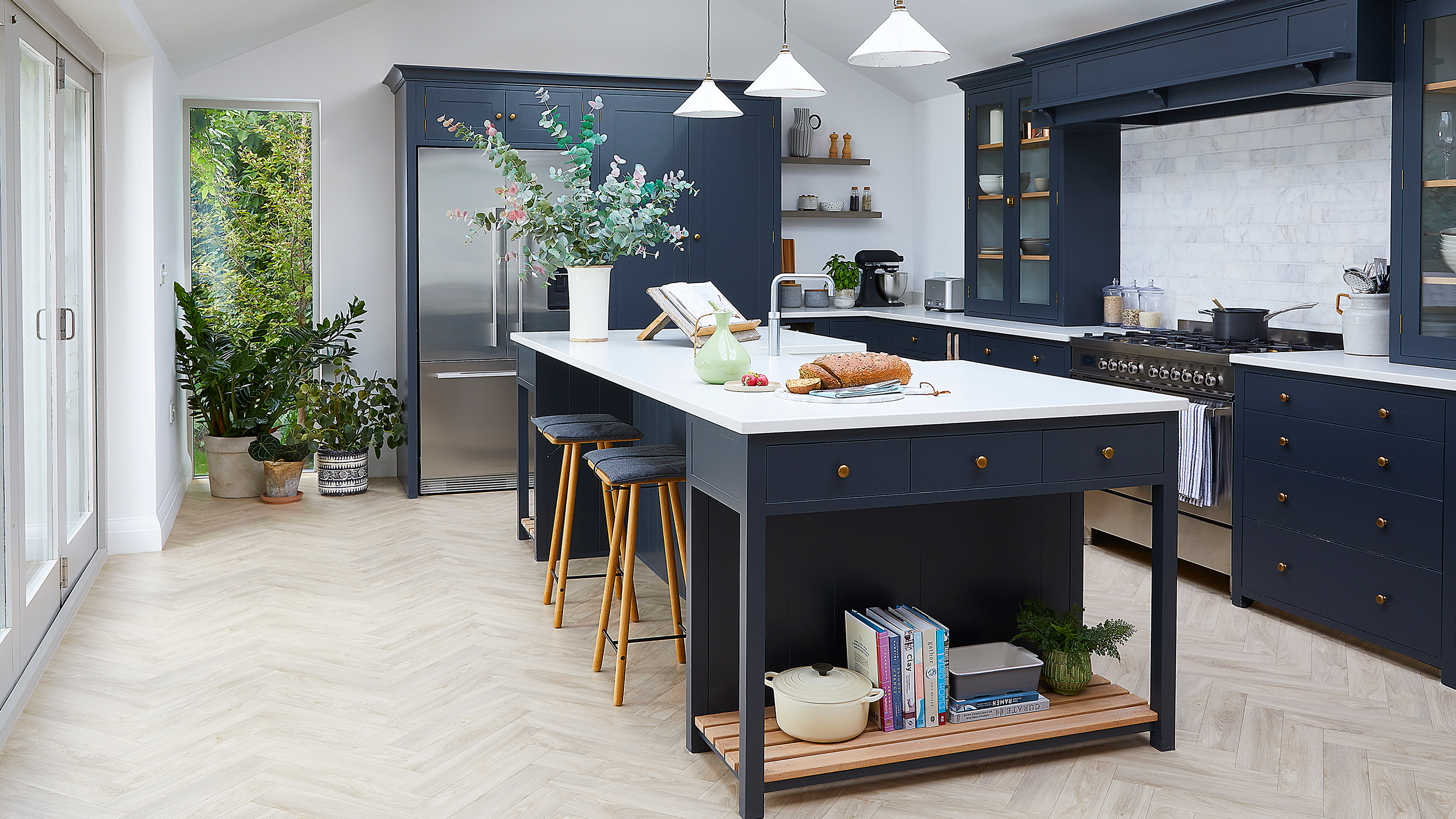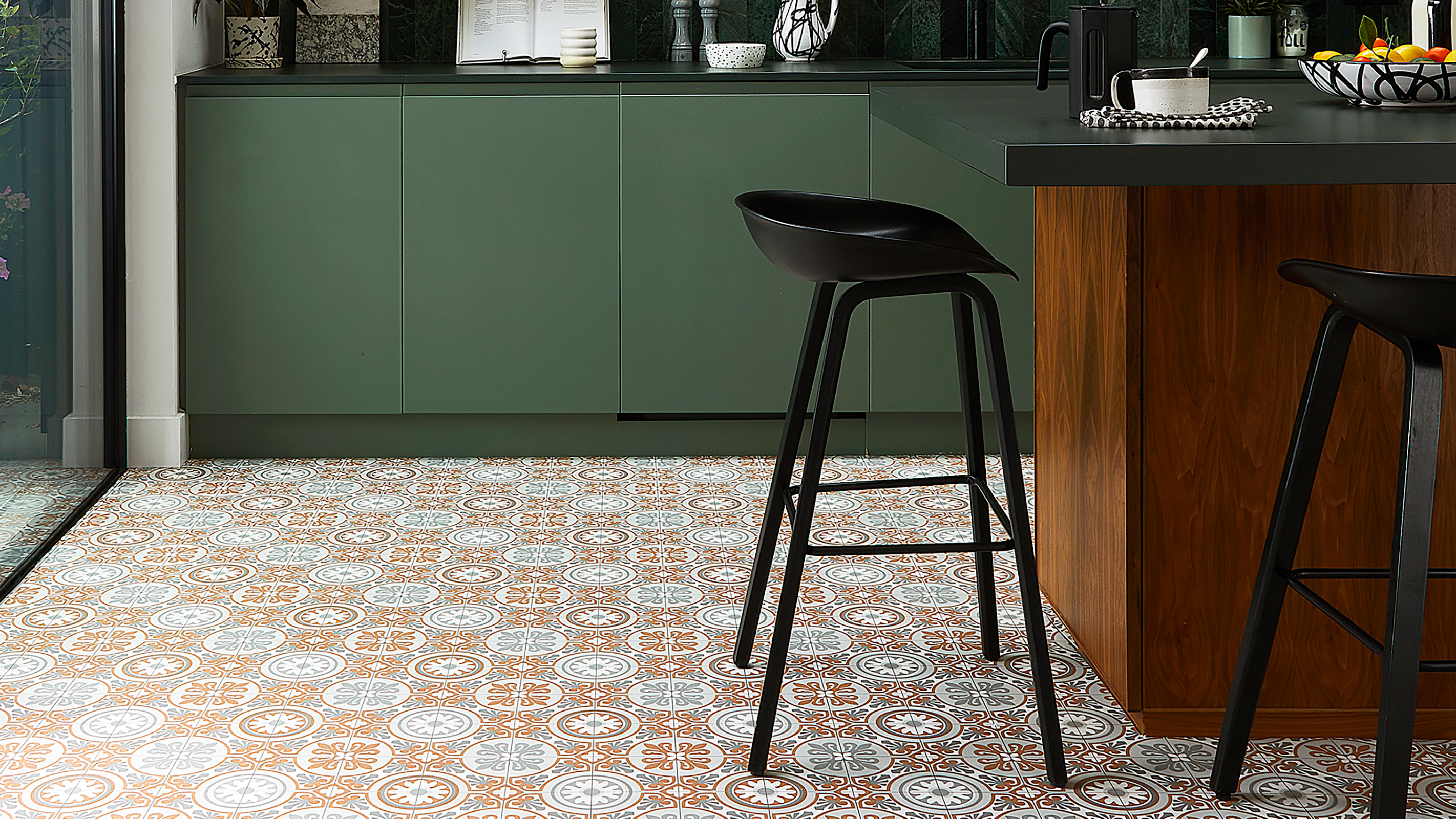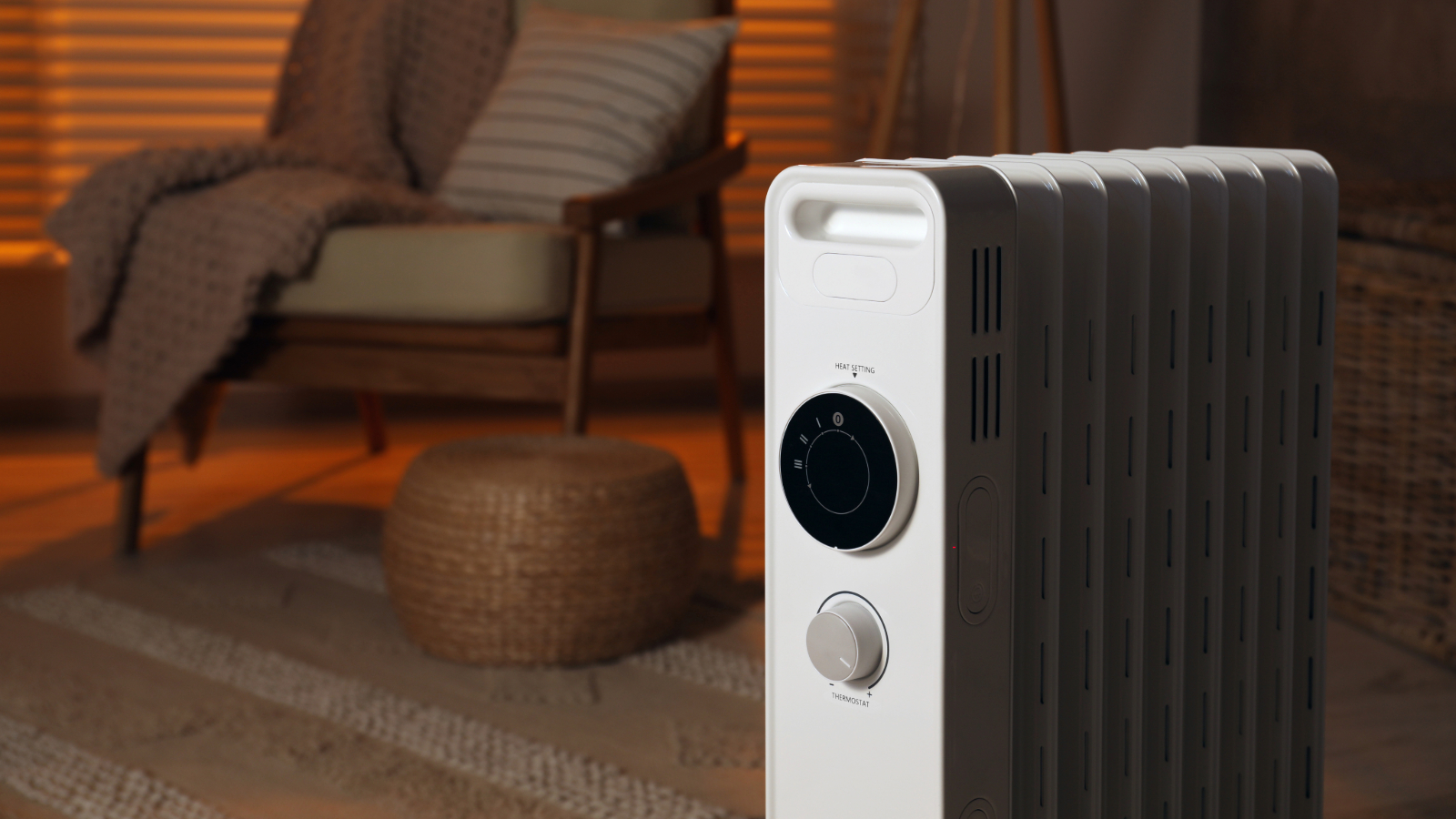How to clean vinyl floors: Top tips for a sparkling floor
Knowing how to clean vinyl floors properly is essential, not only for your floor to look good short term, but also in terms of its longevity

Whether you are wondering how to clean vinyl floors because you already have one and have found your current method rather ineffective, or are considering different types of flooring and researching which is easiest to look after and maintain, our guide is here to help.
Vinyl flooring – both sheet vinyl and luxury vinyl tiles (LVT) or planks – is a fantastic choice. It is low-maintenance, available in a huge range of colours, patterns and effects and is also relatively cost-effective — plus it can be used over underfloor heating.
For any flooring to look and perform at its best it is essential to keep it clean — plus ensuring your floor is free of dirt, grime and debris will also help extend its longevity.
Here, we look at how to clean vinyl floors — and which products and methods to avoid.
How to clean vinyl floors: Expert tips
Although vinyl floors are known as being fantastically low maintenance, like any flooring, they will need looking after and regular cleaning if you want them to stay in pristine condition. There are several types of vinyl flooring, but whether you have decided to go for sheet vinyl (also known as vinyl roll flooring) or LVT, the methods for cleaning are similar.
“Vinyl is renowned for being easy to care for and fuss-free. Because it is waterproof from above, cleaning and maintenance couldn’t be easier,” begins Inga Morris-Blincoe, General Manager at Lifestyle Floors.
“Regularly use a soft brush to sweep or a vacuum to keep your vinyl floor clean,” continues Inga. “Mop it with a non-bleaching floor cleaner when required to ensure it is sanitary and never use abrasive scourers as this could compromise the wear layer, or even scratch and permanently dull the surface. Bicarbonate of soda is great for gently lifting any marks or stains.”
Bring your dream home to life with expert advice, how to guides and design inspiration. Sign up for our newsletter and get two free tickets to a Homebuilding & Renovating Show near you.
“If you want to use a cleaning fluid on your luxury vinyl tiles, you should always follow the advice on how to clean Amtico flooring (a popular LVT brand), and check the label to make sure it’s compatible with vinyl flooring; cleaning products can sometimes contain chemicals that could damage the vinyl and leave excess moisture, causing a floor to become slippery, says Harriet Goodacre, Brand Communications Manager and Tile Consultant at Topps Tiles.
“If you choose to use a cleaning fluid, make sure you only use a little bit of product and make sure you buff the floor well when drying. Floor wax isn’t suitable for LVT either — not only would it make your floor very slippery, but it can also dull the appearance of your vinyl tiles.”

How do you remove stains from vinyl floors?
While it is best to avoid stains on vinyl flooring by ensuring that any spills are wiped up as soon as possible, there are steps you can take to remove stains should they occur.
“It’s best to clean your vinyl tiles once or twice a week, depending on how much you use the room, as this will avoid any stains settling into the surface,” says Harriet Goodacre. “To keep your floor looking brand new, make sure to mop up any spills as and when they happen.”
However, should a stain have set into the vinyl, use a damp cloth with hot water and a mild detergent to help lift the stain — and be careful not to soak the floor. A soft bristled brush, used in a gentle circular motion can also help. If you do decide to use any kind of chemical, be sure that they are suitable for vinyl or LVT flooring before applying.
When the stain has gone, simply wipe over the floor using a damp cloth and water — and be sure that there are no puddles of water remaining.
How do you keep vinyl floors looking good?
Along with ensuring your vinyl floor is kept free of dirt and debris, there are several steps you can take to prevent your floor ageing prematurely.
“Use barrier mats at doorways, which will help to keep out the vast majority of dust and dirt, making maintenance and cleaning easier,” suggests Inga Morris-Blincoe. “However, never use rubber mats on vinyl floors. This can cause a chemical reaction, which could lead to a permanent and irreversible yellow staining.
As with many other flooring types, such as types of wood flooring, it is really important to remember that vinyl has a surface that can be damaged by heavy or pointy objects.
“We recommend removing stiletto heels before walking on vinyl, and it’s worth fitting protectors to narrow furniture legs, as this will help to alleviate some of the pressure on the floor,” says Inga.
“As with any floor, it’s important to avoid dragging furniture over flooring, not only could it mark the vinyl but it could also cause it to lift up at the edges. If you must, then use an old piece of carpet to protect your vinyl — and be sure to sweep and vacuum the floor to remove any debris that could scratch the surface.”

Are there any products that can damage vinyl flooring?
It is important that you avoid certain products and techniques when cleaning your vinyl flooring or you risk damaging it irreversibly. Some manufacturers will recommend you only use cleaning products designed specifically for their floors, and it always pays to get the advice of your supplier before getting mop happy.
In order to prevent disaster, do not:
- Soak the vinyl (or allow water to puddle as this can cause water marks)
- Use abrasive cleaners that could dull the surface
- Use wax to buff the floor
- Clean with products containing bleach
- Use a steam mop — steam can affect the adhesive used for some types of vinyl and can find a way to get beneath through seams in some cases
- Place rubber-backed mats on top of the floor
- Wear stilettos to walk over vinyl, particularly roll vinyl
- Drag furniture across the floor.
Natasha was Homebuilding & Renovating’s Associate Content Editor and was a member of the Homebuilding team for over two decades. In her role on Homebuilding & Renovating she imparted her knowledge on a wide range of renovation topics, from window condensation to renovating bathrooms, to removing walls and adding an extension. She continues to write for Homebuilding on these topics, and more. An experienced journalist and renovation expert, she also writes for a number of other homes titles, including Homes & Gardens and Ideal Homes. Over the years Natasha has renovated and carried out a side extension to a Victorian terrace. She is currently living in the rural Edwardian cottage she renovated and extended on a largely DIY basis, living on site for the duration of the project.

